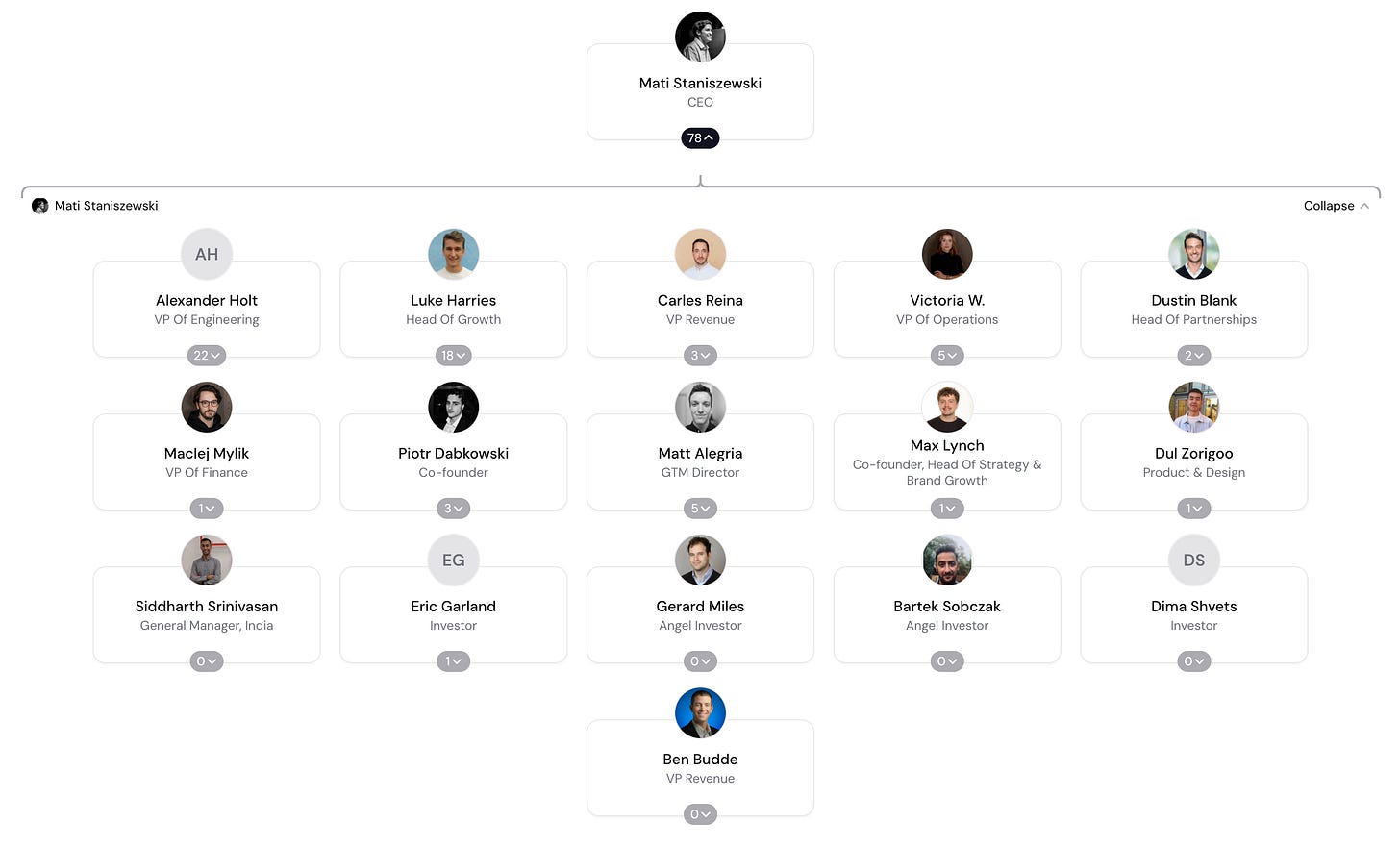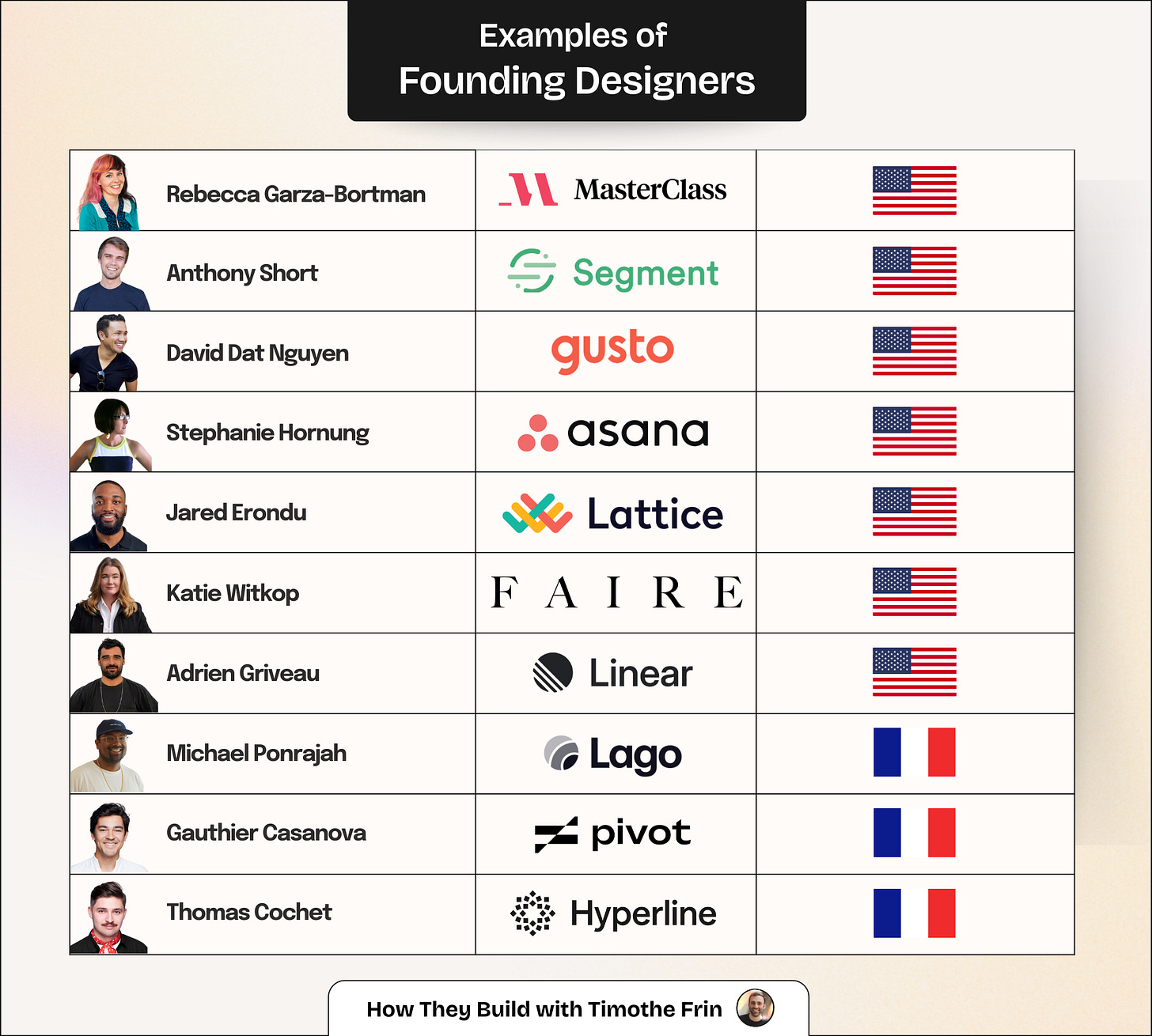Why more startups start with a Product Designer first
What to weigh when your first Product hire is on the line
Hey, I’m Timothe, cofounder of Stellar & based in Paris.
I’ve spent the past years helping 500+ startups in Europe build better product orgs and strategies. Now I’m sharing what I’ve learned (and keep learning) in How They Build. For more: My Youtube Channel (🇫🇷) | My Podcast (🇫🇷) | Follow me on Linkedin.
If you’re not a subscriber, here’s what you’ve been missing:
For any startup, the first product hire is a critical decision that shapes not only the early product but also the culture, speed, and brand of the company. Traditionally, many founders hired a Product Manager as their first Product profile. But in recent years, more startups in Europe and the US have chosen a different path: starting with a Product Designer instead. In today’s newsletter, I break down the reasons for this shift, the biases involved, and his advice for founders facing this decision.
Big thanks to Lucas (Hyperline), Raffi (Lago), and Adrien (Linear) for their insights in this edition.
Disclaimer: The organizational choices and technical solutions shared in this newsletter aren’t meant to be copied and pasted as-is. Always keep your company’s context in mind before adopting something that works elsewhere! 😊Why many founders now choose a Product Designer first
Historically, the default first Product hire has been a PM. When founders raised capital and wanted to formalize their Product function, they went straight to a PM. But a new pattern has emerged: companies like Lago, Pivot, Hyperline, and Linear started by hiring a product designer instead. And they’re not alone. US scaleups like Segment, Masterclass, and Asana also went down this path.
Why? Early founders often don’t want a role focused only on coordination.
“I think the PM role can be shared between developers, tech management, and even the designer. Personally, I’d rather hire a Product Designer at the start—especially when you’re still small—someone a bit crafty who can hack things together. Instead of a PM who, by default, is less into the craft and more focused on process, discovery, and all that” - Lucas Bédout, CEO @Hyperline.
Product designers, by nature, are closer to the craft: they ideate, prototype, and build. That means they contribute directly to shipping product rather than orchestrating others. This also reflects lessons from past experiences. Founders like Lucas (Hyperline) or Anh-Tho (Lago) had struggled in earlier roles with PMs they perceived as coordinators or Project managers who slowed things down rather than accelerating them.
“At Qonto, I saw too many PMs trying to prove their legitimacy because they don’t actually produce. As a result, they often struggled to earn respect from engineers or designers. It’s something I’ve seen come up quite a lot”. - Raffi Sarkissian, cofounder @Lago
The trap of hiring coordinators too early
One of the biggest mistakes to avoid is hiring a coordinator-type profile too early.
Whether labeled PM or Designer, these individuals see their role primarily as orchestrating others rather than crafting themselves.
“I didn’t want people who don’t actually produce, people who just act as go-betweens like the PMs I had seen in other companies.” - Raffi Sarkissian, cofounder @Lago
This kind of hire can alienate engineers, slow velocity, and create silos in a moment when collaboration is paramount. Startups need builders, not managers, in their first product roles. Early hires should get their hands dirty—prototyping, iterating, and driving the product forward alongside the team. Coordination, process, and scaling can come later once the foundation is set.
The bias against PMs and the naming problem
A key driver of this shift is bias formed from past experiences with PMs. Many founders have “suffered” through poor PM relationships in previous companies.
These experiences push them to avoid repeating the pattern.
But there’s also a semantic problem: the term “manager.” The word carries connotations of hierarchy and ownership, which clash with early-stage team dynamics where everyone is expected to be hands-on. This naming issue creates misunderstandings about what a PM should do, especially in Europe where the role is still often misinterpreted compared to the US.
In fact, many first PMs fail because of this mismatch. As this article puts it: “Why you want to be the second first PM”.
It’s often a brutal, ill-defined role. Recognizing this, some companies delay hiring PMs until much later, opting instead for roles like Product Designer, Product Engineer, or even Growth leads.
Design sends a strong market signal
Beyond internal dynamics, the first Product hire also sends a strong external message. Choosing a Product Designer first signals to the team, investors, and customers that Design is central to the company’s DNA.
“Early on, brand is super important—it defines your positioning. And honestly, a PM won’t bring much to your brand, whereas a designer will.” - Adrien Griveau, Founding Designer @Linear
The effects of this decision are visible in companies like Linear, Hyperline, and Lago. Their products and websites stand out as beautifully crafted experiences, reflecting early prioritization of design.
Strong design doesn’t just delight users—it builds brand differentiation, especially in B2B crowded markets.
“The emphasis on design in adoption is one of the most important things, because design creates an emotion when you look at the product—an emotion that pushes you to dig deeper, whereas without it you wouldn’t even bother” - Lucas Bédout, CEO Hyperline
Designer-first works when a founder owns Product
From my conversations, the designer-first path works only if a founder already carries Product end to end—writing specs, challenging tech proposals, setting the bar for quality and velocity. Without that anchor, you risk creating a coordination gap and slowing everything down.
“I would advise other founders to do this, but with one condition: at least one of the founders must have a huge product focus, with a deep eye for details and a global vision of both tech and product.” — Raffi Sarkissian, cofounder @Lago
What founders should consider before deciding
While the Designer-first trend is strong, I’d rather warn against following it blindly. Instead, I suggests two guiding questions for founders:
What competencies are we missing in our founding team?
What kind of product experience do we want to create?
If the founding team is already strong in design or UX, a PM might bring more value.
If the company is highly Sales-driven rather than Design-driven, a PM could help align the org with business needs. Conversely, for Consumer products or Design-led markets, starting with a designer can amplify differentiation.
“I’d look more at the person than the title. If you meet a PM with deep domain knowledge who can sketch wireframes, it can work. But if you find a designer who also understands product, that can work too. It’s really about who can bring the most value quickly.” - Adrien Griveau, Founding Designer @Linear
Ultimately, the choice should not be ideological but pragmatic: identify the gap and hire accordingly.
The rise of alternative models
Beyond the PM vs. Designer debate, some companies are rethinking Product roles altogether. Eleven Labs, for instance, has over 300 employees but no Product Managers. Instead, Engineers are given autonomy, while a Growth department (staffed partly by ex-PMs) drives business outcomes. Stripe also pioneered the concept of “Product Engineers,” merging Product and Engineering responsibilities for years before introducing PMs.

These models show that there isn’t one right answer. They highlight the importance of clarity: what matters is not the title but how responsibilities are distributed and how product ownership is defined. With AI-driven prototyping and design tools blurring boundaries, I think the distinction between PMs and Designers will shrink even further in coming years.
Choosing your first Product hire is as much about culture and speed as about role definition.
A first Designer signals design DNA, accelerates velocity, and builds early trust among the team.
Biases against PMs often stem from misaligned expectations and naming confusion rather than inherent flaws.
Founders should start by mapping skill gaps in their team before defaulting to PM or designer.
The biggest hiring mistake is bringing in coordinators too early—early hires must be active builders.
Alternative models like Eleven Labs and Stripe prove PMs aren’t always necessary in early growth phases.
My video (in french 🇫🇷) about the 1st Product hire
If you enjoyed this edition of How They Build, I took a deeper, unfiltered dive into the topic in my latest YouTube video. For now, this new raw video format is only available in French — but let me know if you’d like to see it in English.
If you enjoyed this edition of How They Build, I dive deeper in my latest YouTube video (currently in French; happy to produce an English version on request).
Also available as a podcast (French for now):
Enjoyed this newsletter? Share it with your network using the button below—your support means a lot!





Your disclaimer at the start of the article is key ! Never copy paste as is !